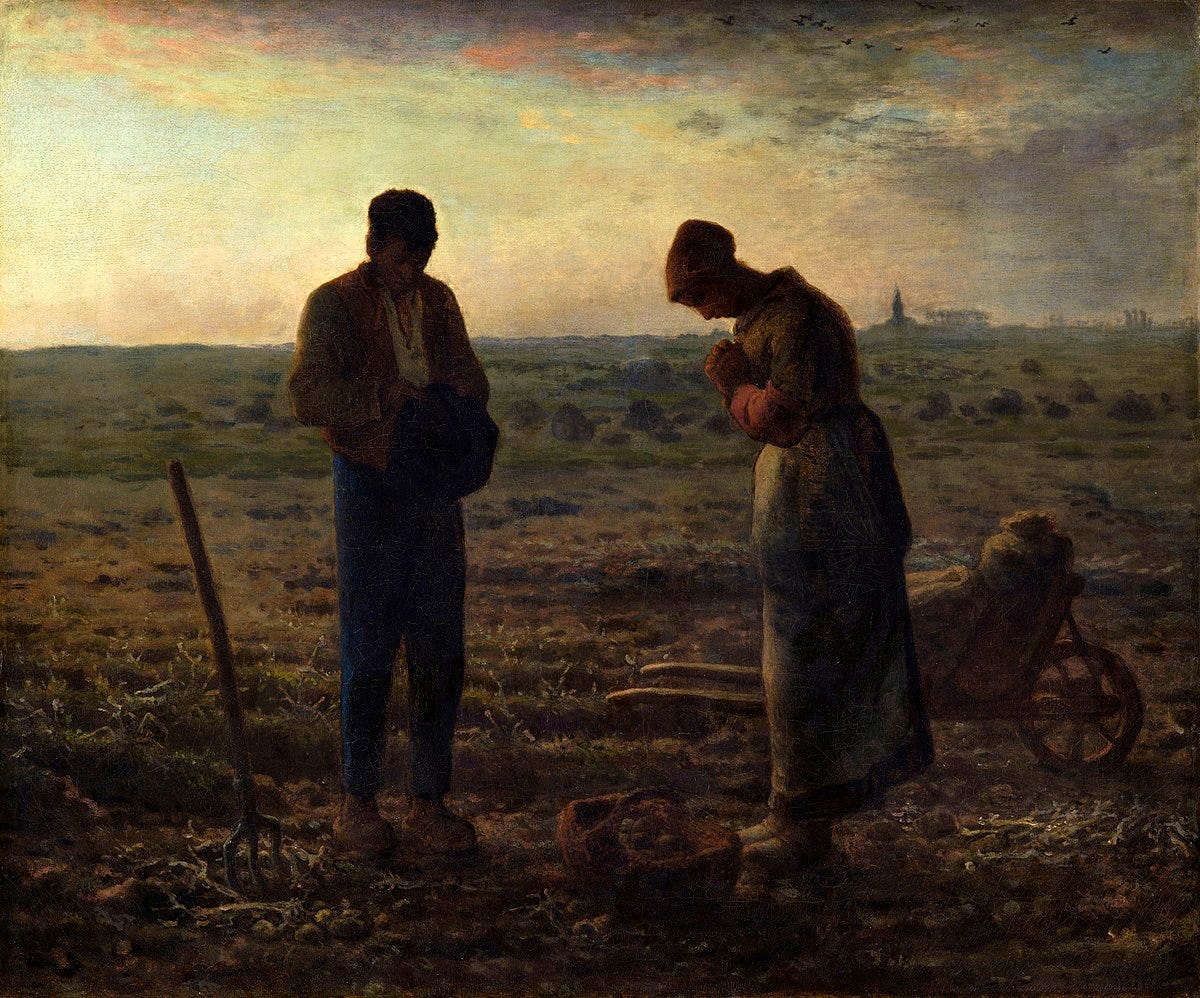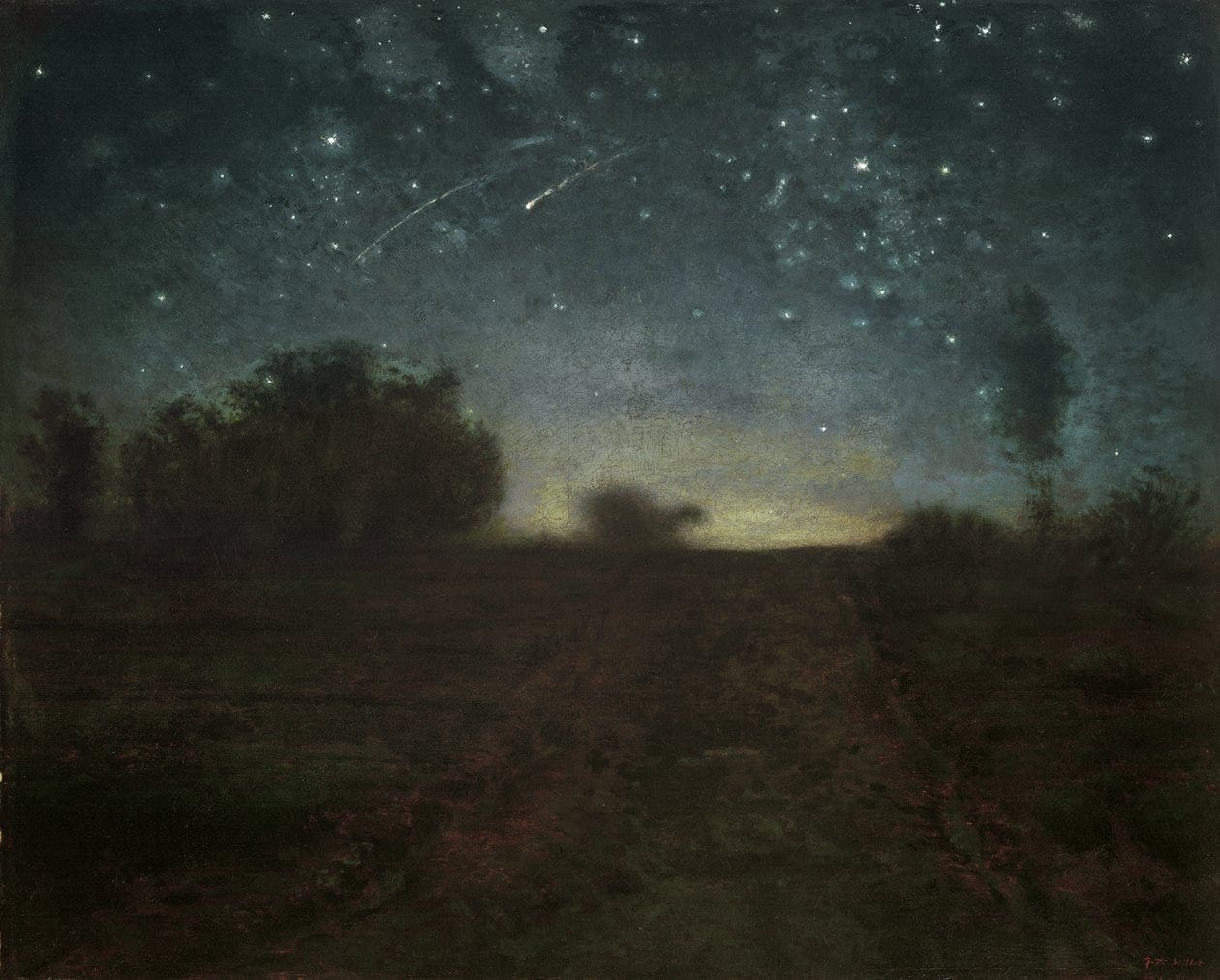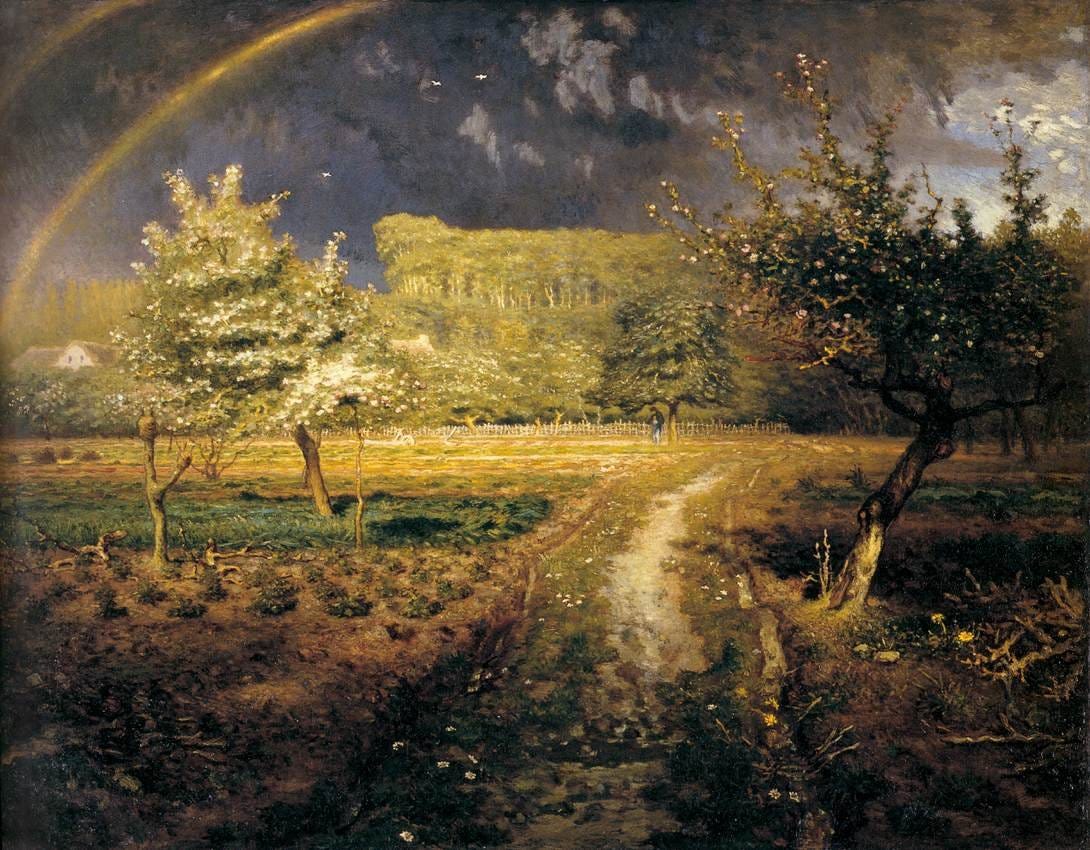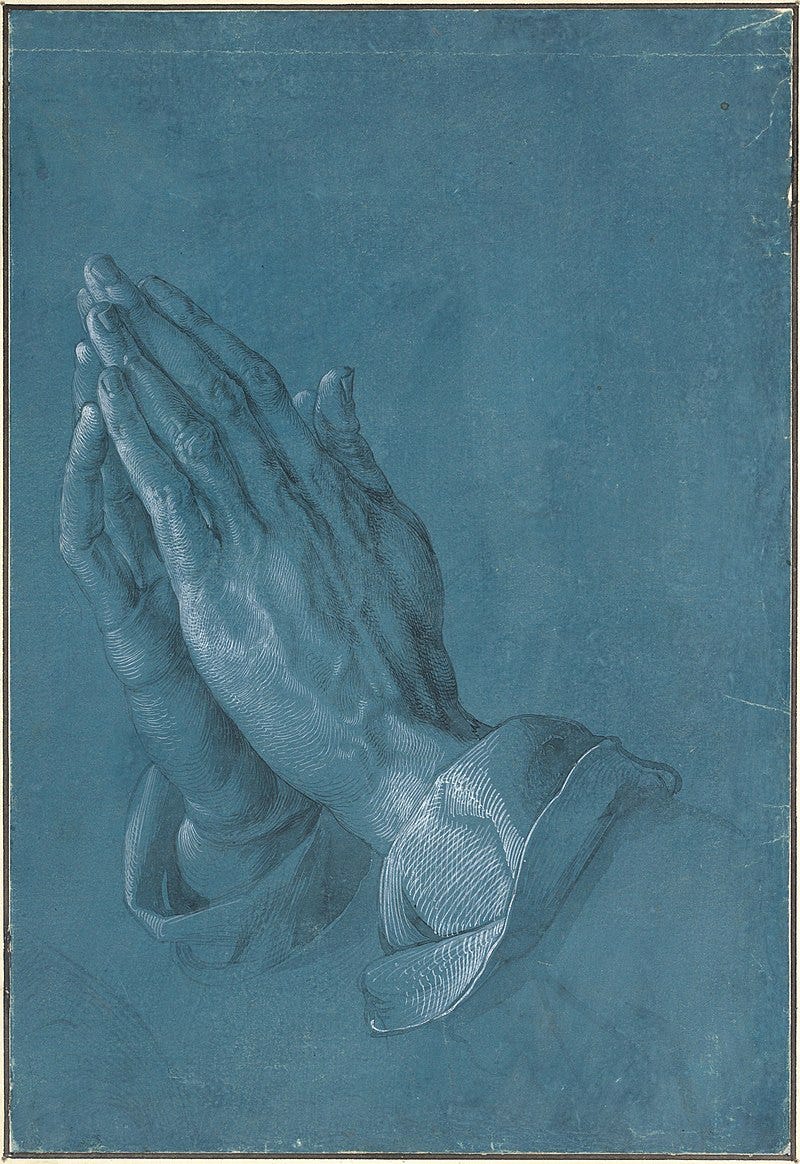I once had a friend whose mother was afflicted with a strange illness. She was Catholic, and she could not help making the sign of the cross almost constantly. The compulsive flailing of her arm looked like a dance, and he called it St. Vitus’ dance, although this actually refers to a different medical condition. By the sounds of it, his mother was suffering from scrupulosity, an OCD-type disorder which causes people to engage in compulsive religious observance due to obsessive guilt or anxiety.
Possibly as a result of his mother’s disordered behavior, my friend was critical of people who prayed. “Instead of spending all that time praying,” he suggested, “maybe they should actually do something?”
My friend seemed to believe prayer was a substitute for action. It’s not an uncommon sentiment, although I’m going to suggest the opposite: a prayerful life ought to be the basis for all action.
“You say grace before meals. All right. But I say grace before the concert and the opera, and grace before the play and pantomime, and grace before I open a book, and grace before sketching, painting, swimming, fencing, boxing, walking, playing, dancing and grace before I dip the pen in the ink.” - G.K. Chesterton
This post takes about 15 minutes to read, yet I’ve hesitated for two years to attempt writing it. I’m not a theologian or a monk. These are the imperfect reflections of one person, focused mostly on the human side of prayer, as opposed to the God side. I felt it necessary to write, as many of the opinions I hear about prayer seem to diminish the importance of language too much while elevating the importance of “spiritual experiences”, or else do the opposite.1
Prayer obviously involves language. And just as obviously, we tend to think that language is for communication. We have words so that we can speak to each other, or in the case of prayer, speak to a Higher Power. Although these things are not untrue, they miss something fundamental about language. When we use language, we aren’t just using words to talk. Words are like mirrors, shaping our ideas and reflecting what we can see.
It reminds me of the Hubble telescope. The Hubble uses mirrors rather than lenses to bring distant objects in space into focus, but when it was first launched into orbit in 1990, the images it produced were blurrier than expected. The problem turned out to be a flaw in the primary mirror. Measuring 2.4 meters in diameter and weighing 1825 pounds, the mirror had a manufacturing defect. The outer perimeter was too flat by about 2200 nanometers—a slight error, but consequential.
Below, the photo to the left is spiral galaxy M100, taken with the original flawed mirror. The photos in the middle and right are what Hubble showed after two successive corrections to the mirror.
Small differences can make big differences. Here in Earth’s orbit, we correct a flaw of 0.00008661417 inches, while out there—56 million light years away—we turn a blurry blob into something distinct and vivid.
Language does what the Hubble telescope does. It allows us to see the world with a certain level of resolution. If our language is dented, warped, scratched, or otherwise flawed in how we use it, we see a blurrier image of things. A warp in our language can create distortions in our perception.
Therapists have long recognized this. People with depression or anxiety often use distorted language to describe their lives—I’ll never get better, I’ll always fail—and part of the work of therapy often involves revising this language to more accurately reflect reality.
And when, however reverently, you have killed a word you have also, as far as in you lay, blotted from the human mind the thing that word originally stood for. Men do not long continue to think what they have forgotten how to say. – C.S. Lewis
The language of prayer is the language of holy writings, liturgy, and hymns, often mingled with the words of our own thoughts, questions, fears, hopes.2 All these words are telescopes aimed toward God. If the goal of psychotherapy is to un-distort our cognitions about some specific aspect of our lives—some struggle with our mood, for instance—then the goal of prayer is to un-distort our cognitions about the whole of life and our relationship to the Infinite.
Of course, nobody gets the words or ideas all correct. There’s a reason why there are over 45,000 different Christian denominations in the world, and thousands of other religions. Nobody quite agrees on the words.
Still, this is no reason to abandon the search for spiritual truth, or to abandon any role for language. And I would go even further and suggest that specific words and ideas matter in prayer. Nanometers of difference in meaning can, over time, translate into distortions of understanding and spiritual astigmatism.
Yet there is also a danger that we cling only or mostly to the words, or to the ideas we form based on the words. It would be like clinging to a powerful telescope because of its great value, while never bothering to look through the eyepiece; or else we look, but we aim the telescope at only one spot in the sky, and believe that spot to be the whole of the universe.
Excessively rational or fanatical forms of faith are more prone to this tendency. They can get so caught up in the propositions of their faith, that the propositions become more important than the God who inspired them. Religion becomes a group of people clinging to telescopes.
The mirror of the heart
When we pray, we may discover that behind all the smaller mirrors of the telescope—behind all the specific words and ideas—there is a larger mirror, in which everything is gathered together in a more wholistic focus.
If the smaller mirrors of prayer are ways of angling the thoughts in our head in a particular direction, then the larger mirror of prayer is a way of angling our whole heart, whole being.3 It’s an effort to turn ourselves away from the false and toward the true. It is an act of “repentance” in the original sense of the Greek word, “metanoia”: a fundamental change in our outlook or a transformative change of heart.4
Sometimes, in the middle of prayer, we might sense an intuition or faint response of some kind, as if something in or behind our heart is speaking back to us. I recall one young woman who felt a peculiar tingling in her belly during prayer, and believed it was the Holy Spirit. Whether it was, or wasn’t, I don’t know. But it would be a mistake to assume that what we sense in our heart (or mind or body) always corresponds to some pop-up notification from the Universe. The heart is capable of great insight, but also misperception, because there’s always some warp in its manufacture.
Just as people can cling to words and neglect the heart, there is an opposite danger: to neglect the words—to abandon discernment—and to cling only to the heart. It’s an understandable error. If the heart can reflect the spiritual realm, then we naturally want to see the image in that reflection.
And of course we don’t just want to see the reflection. We want to enter it and be transformed. The heart is where we encounter visions, revelations, hear the voice of God. Some spiritual seekers yearn for an experience of (what they believe to be) mystical unity with the entire universe. These moments are almost impossible to properly articulate with words, although some have tried. A friend of mine, Ellis Potter, who is a former Zen monk-turned-Christian, described it this way:
As a teenager I was experimenting with Hinduism and Zen, when I had a strange experience…It happened in the summer one day, when I was going to take a nap on the upper part of a bunk bed. I got onto the bed, and I lay down, and as my head touched the pillow I experienced expanding instantly to the same size as the entire universe. It was an intense experience. I don’t know how long it lasted, maybe about twenty minutes…It gave me hope that there is truth, there are absolutes, and you can really connect with reality as a whole.
Potter’s observation that his experience lasted “about twenty minutes” is consistent with research. The average mystical state lasts about 18 minutes.
What happened to Ellis Potter also happened to David Yaden when he was a teenager:
Yaden remembers lying on his university dorm room bed one day, when an unusual sensation came on out of nowhere.
"It began with a feeling of heat in my chest, which eventually spread out through my entire body...And at some point in my mind, I realized that this wasn't just heat, this wasn't indigestion, that this was actually love."
"I went fully into my mind…It felt like I went out of my body and into this infinite, 360-degree, horizonless, timeless place and that feeling of love just reached the boiling point."
And after what was probably just a minute or so — which felt much longer — he opened his eyes and found himself laughing and crying at the same time.
Yaden didn’t end up becoming a Zen monk or Christian. He is an atheist, and also a researcher who has spent much of his career trying to scientifically understand what happened to him. In a book co-authored with Andrew Newberg, Yaden suggests there are two broad types of mystical experiences: the “annihilational”, in which we completely lose our sense of self, and the “relational”, in which we don’t lose the sense of self but instead feel connected to everything.
There is even a possibility that the left hemisphere of the brain (the inferior parietal lobe) is more involved in the sense of self while the right hemisphere is more involved with a general sense of space. According to Yaden and Newberg, this “may help explain the difference between the annihilational (loss of self related to the left parietal lobe) and relational aspects (connectedness or unity related to the right parietal lobe)” of different mystical experiences.
Some might interpret the brain science as evidence that all mystical experiences, and spiritual experiences more broadly, can be entirely reduced to brain processes. This view is probably dominant among scientists and rationalists, but most people, I suspect, would find it lacking. It is essentially a materialist perspective, a dead-matter view of reality that is so peculiarly at odds with the very-living human beings who are composed of that dead matter.
What is the frequency that God works at?
The alternative view is that our brain has, in effect, a kind of prayer equipment. There is a purpose, a telos, to the material complexity of the brain. One type of equipment—the words and concepts—actively orient us toward the spiritual; the other type opens us up to receive an experience of that spiritual. If the brain was a radio, the words are the frequency and the music is what we hear.
Saint Paisios, an Orthodox saint who had once been a radio operator, said that “love and humility are the frequency in which God works”.
The individual ideas and words of prayer are only of use if they help to rightly focus the whole heart in love and humility. And while the focus is in one direction—toward God—the process is more cyclical. Our words lead us into the heart, and the heart leads us back to our life, changed and renewed—and then we return to prayer. It’s like stitching with thread, the needle piercing the fabric through one side and then coming back up through the other.
Prayer is also where we meet our pains. Not only the small pains, but the big ones that we’re unable to overcome. Strangely, in my own (rare) experience anyway, this is when some of the most extraordinary things happen. Often miracles arise after we’ve been stripped of our power, and discover our creaturely dependence on a Creator. Miracles are thought to be rare events, but increasingly I suspect they are happening constantly in plain sight. The humility we discover in prayer grants us a kind of vision, cures a certain ego blindness, that helps us to see blessings and wonders that might have otherwise remained invisible.
A sustained practice of prayer has many incidental benefits. It strengthens our attentional functions, our language, our moral sense, and our ability to regulate emotions by encouraging peace, patience, forgiveness, gratefulness, self-control. And when we pray together, multiple minds are working in synchrony, creating deep social bonds.
My wife and I recently attended a weekly Lenten service at our Orthodox Church, which involved a lot of standing and many prostrations. At times it felt like we were doing push-ups, surrounded by a pensive crowd of hanging icons. Prayer, in the fullest sense, exercises the whole person, cognitive, emotional, social, and sometimes even physical. Where else in life are so many dimensions of our being brought together in the service of the Ultimate?
There’s always a danger that we don’t use our prayer equipment properly. We cling to the telescopes, fixating on the ideas, or else we abandon the telescopes and wallow in warm gas clouds of spiritual feeling. Or else the words are off, the mirrors are badly warped and the telescope shows a Rorschach blur—some butterfly blob, the dim disguise of our own projected ego.
Or maybe we overvalue those transcendent experiences that seem to take us away from this world. Such experiences, although often positive, can become idealized events that we cling to, and interfere with our spiritual effort.
The function of prayer is to connect us with the spiritual realm, yet not to remain there, but to more fully establish us in this world. We go inward to come outward: like needle and thread, prayer is a way of stitching together the inner and outer person, the spiritual and physical dimensions of our being, while being healed in the process.
And yet, despite the effort, this stitching and healing doesn’t happen by our own effort, but by a Creator who is accomplishing the same thing on a cosmic scale. On earth as it is in heaven.
Prayer, acedia and machine culture
The goal of prayer, for me, is not to make me a more religious person. It’s to make me more a person.
I know this isn’t the reality for everybody. For some, prayer is a religious duty; or wishful thinking; or as my old friend feared, a substitute for action; or else, sadly, a justification for evil action. It is easy to get prayer wrong, not because prayer is wrong, but because people are messed up—“fallen” as the theologians say—and when we fall, we tend to drag God down with us.
Sometimes our prayers dry up. The words cease to mean much, and the heart feels silent, even apathetic. A life of prayer will go through cycles of barrenness, doubts, weariness. Evagrius Ponticus, an ancient Desert Father who lived in the 4th century A.D., described it this way:
The demon of acedia, which is also called the noonday demon, is the most burdensome of all the demons. It besets the monk at about the fourth hour (10 am) of the morning, encircling his soul until about the eighth hour (2 pm).
First it makes the sun seem to slow down or stop moving , so that the day appears to be fifty hours long.
Then it makes the monk keep looking out of his window and forces him to go bounding out of his cell to examine the sun to see how much longer it is to 3 o’clock, and to look round in all directions in case any of the brethren is there.
Then it makes him hate the place and his way of life and his manual work. It makes him think that there is no charity left among the brethren; no one is going to come and visit him…
It makes him desire other places where he can easily find all that he needs and practice an easier, more convenient craft…
It joins to this the remembrance of the monk’s family and his previous way of life, and suggests to him that he still has a long time to live, raising up before his eyes a vision of how burdensome the ascetic life is.
When our prayers dry up, it can feel like a perpetual noonday, an unrelenting “acedia” of not caring. But even this can become part of our prayer life. I don’t mean simply in the sense that one prays about it (we might even be too weary for that), but in the sense that periods of acedia can teach us patience, and give us insight into the limitations of our mind, heart and body.
Lately I have wondered if acedia doesn’t just afflict individuals, but whole nations. There’s been a crossover trend over the past decade and a half, at least in the US, with the frequency of daily prayer slowly declining, while daily tech use has been increasing. Are people growing weary of prayer, because it doesn’t give the same dopamine kick as scrolling the internet?

Despite the decline since 2007, there was a little uptick in daily prayer between 2023 and 2024 (from 44% to 46%). This parallels another recent finding that the percentage of people in the US identifying as Christian—which has also been declining since 2007—likewise ticked upward between 2023 and 2024 (from 62% to 63%). These are tiny differences, and could simply reflect chance, or they might hint at a broader trend in the US and possibly beyond. In an increasingly destabilized world, some might be gravitating to prayer as a source of comfort or meaning.
Meanwhile, there’s another crossover trend between prayer and tech. Compared to what prayer does to the mind, our digital (online/AI) devices often do the opposite: scattering our attention; weakening our language skills; dysregulating our emotions; distorting our moral sense by curating feelings of outrage; and encouraging virtue signaling rather than actual humility.
And all this is not for the sake of any true Ultimate, but to monetize our activities in the service of Big Tech, or else to manage our behavior in the service of an emerging big technocracy.
Our machines have anti-viruses, but a life of unceasing prayer is an anti-virus against machine culture. How does prayer do this? Not primarily by making us think of ways to reduce our tech use. Not primarily by strengthening our concentration or some aspect of personality. It does it, mostly, by keeping our telescope aimed at the heavens, and always asking, Who is worthy to enter my heart?
Live Meeting
Come and join me and Peter Limberg for a deep dive into the “3Rs of Unmachining —Recognize, Remove, Return — and confront The Pull, the force that keeps us trapped in compulsive digital distraction” on March 22nd at 12 PM EST followed by a discussion period. See here for details and registration.
Other Readings
For meta-level theological reflections by former Zen monk-turned-Christian Ellis Potter, see his classic book, 3 Theories of Everything. His latest work, A Universe That Hopes, includes 3 Theories as well as two other books.
To read more about the science of spiritual experiences, see David B. Yaden and Andrew N. Newberg’s The Varieties of Spiritual Experience.
For more of my own writings on prayer, meditation, and faith, see The Search for Stillness in a Mad, Mad World, and Disruptive Spirituality: A Fire that Purifies.
Pilgrimage
Come and join me, Ruth Gaskovski, and Dixie Dillon Lane on the Camino Pilgrimage in Spain from June 14-24. Space is limited, so reserve your spot now. You can read all about it here or download the brochure here. We would love for you to join us in visiting historic sites, sharing meals, building relationships, all while hiking through a naturally and spiritually inspiring landscape.
I come from a Christian perspective, but for sake of brevity and clarity, I will attempt to avoid writing in “Christianese” or exploring specific doctrine. I have also excluded any discussion of the dark side of spirituality, such as the demonic, as this is a whole other subject.
Icons and religious symbols are a special and complex topic, which I won’t examine here.
From the perspective of the human mind as described by
, we might say that the one involves a linguistic and conceptual left-hemisphere mode of perception, while the other involves a more wholistic right-hemisphere way of experiencing things.Associated meanings of “metanoia” denote a change of mind or fundamental re-orientation.










Incredible article. My personal favorite out of all of your stuff (which is all already extremely high caliber stuff).
Grateful for taking the time it took to write this piece, one I will return to. My prayers revolve around what I call ensoulment—soul in body. Dancing, art, and nature center me in a wordless prayer life. Stillness is in there, too. The physicality of grace, the receptive channels of spiritual intelligence attune in me. I sync up with guidance and am often rewarded even in discomfort. Writing and words bring order to my experience of life, goodness, and mystery. Unfortunately, my Christian upbringing and its impacts on U.S. culture idolize words. We think prayer is about words. Indigenous wisdom reminds us that words are the last place you go to pray. Dancing is a global gateway of prayer, a technology that syncs people up to earth and heaven. Perhaps this is why in the Apocryphal Acts of John, in the Hymn of Jesus, Jesus on the night he was betrayed, gathered his people in a circle and chanted as they danced, "Who does not dance, does not know what comes to pass."